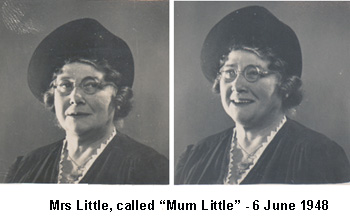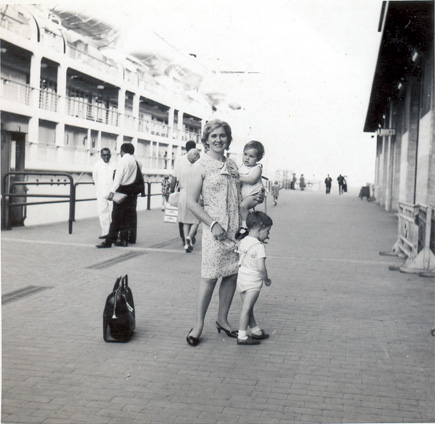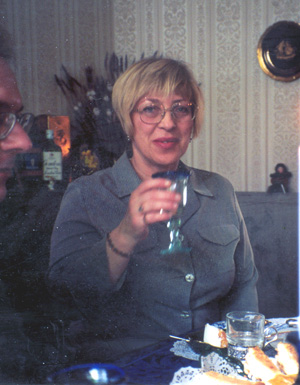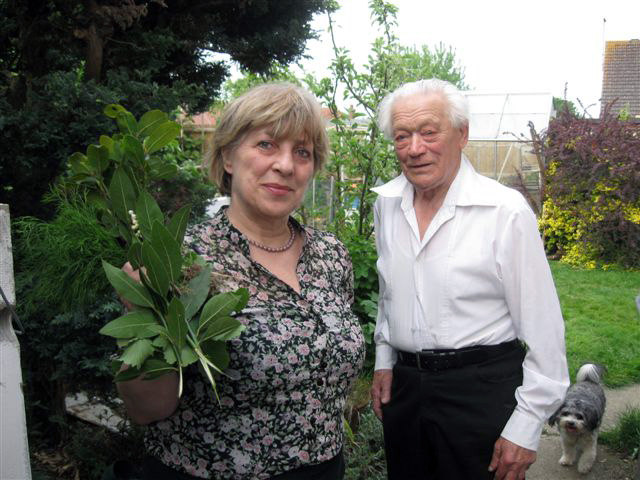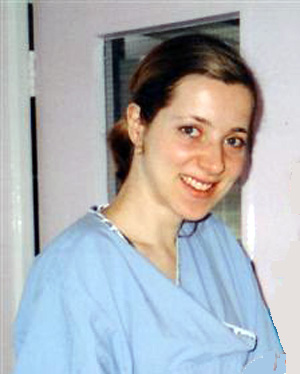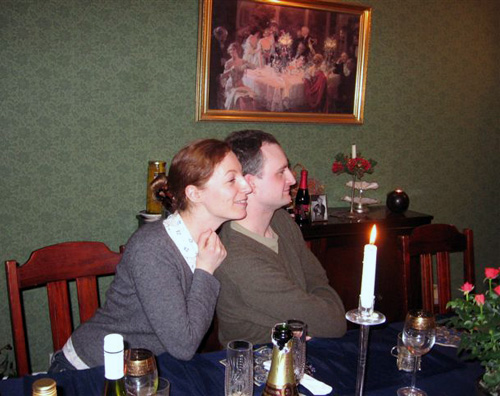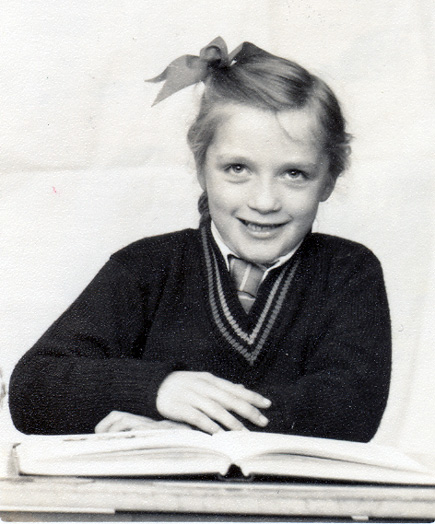 |
WITH
MY BROTHER AND COUSIN AND POST WAR ENGLAND |
 |
|
WARTIME ENGLAND : 1942 - 1946 |
To
Post war England: 1946 > (below) |
|
REUNION DURING THE WAR OF TWO SURVIVING BROTHERS NOW POLISH SOLDIERS IN SCOTLAND and wearing shoulder stripes of Polish Forces in the West |
|
|
|
1943 - Edward came on his own army motorcycle to visit me at my Special Unit's Training Centre in Polmont, Scotland. |
I am trying out Edward's motorbike |
66.121
|
Edward RYMASZEWSKI |
| Edward traveled to Britain with one of the early sea transports of Polish troops from Palestine originally evacuated from the Soviet Union with the gen. Anders Polish Army.
Edward arrived in England in 1942, aged 24 years and was transferred to the Polish 1st Armoured Division stationed in Scotland and commanded by General Maczek.
Edward then took part in the drive through Normandy in France, culminating in the battles of Falaise and Chambois where Polish troops cut off the retreat of 60,000 Germans, thus helping the liberation of Paris. The Poles, an Allied army, were at first allocated by the British High Command to fight as part of the Canadian Corps. So the victories were not attributed as Polish victories but Canadian. But once, Canadian sappers erected on Mount Ormel a sign that read, as a mark of respect, "A Polish Battlefield". Later, the Poles went on to liberate Abeville, St. Omer, Ypres and Ghent in France. The Division then drove through Belgium into Holland where they liberated Breda (27-29 Oct 1944). The Dutch to this day express their gratitude to the Polish Army at the liberation celebrations. Edward then went into west
Germany where the Polish Division accepted the German surrender
and occupied the port of Wilhelmshaven. |
|
 Polish military policeman guiding military traffic in Holland |
 1st Polish Armoured Division using Sherman type tanks |
67.112
|
Mieczyslaw RYMASZEWSKI |
In 1943 Mietek, aged 22 years, was with the general Anders Polish 2nd Corps in Egypt when he was transported by ship to Italy where he took part in the Italian campaign. The Corps fought at Monte Cassino and hoisted the Polish flag on the ruins of the abbey which it captured. After the battle of Monte Cassino the infantry units lost a lot of men and there was an appeal for volunteers for transfer to the infantry. Mietek volunteered and joined the 3rd Carpathian brigade. He was then wounded on 21 June 1944 in the battle on the river Kenti. After some time in hospital near Taranto, he was transferred to Britain, to the Polish hospital No.1 in Taymouth castle, near Aberfeldy, Perthshire, Scotland. Later on, he spent a short time in a convalescents depot in Peebles, before returning to Italy. The Polish 2nd Corps took then Ancona and ended the war by liberating Bologna. Mietek, with his battalion, was then posted to guard German POW's including 10,000 SS men, at Rimini on the coast of the Adriatic sea. Eventually Mietek was brought to England to be demobilized like most of the Polish troops serving in the West. |
On the slopes of Monte Cassino |
|
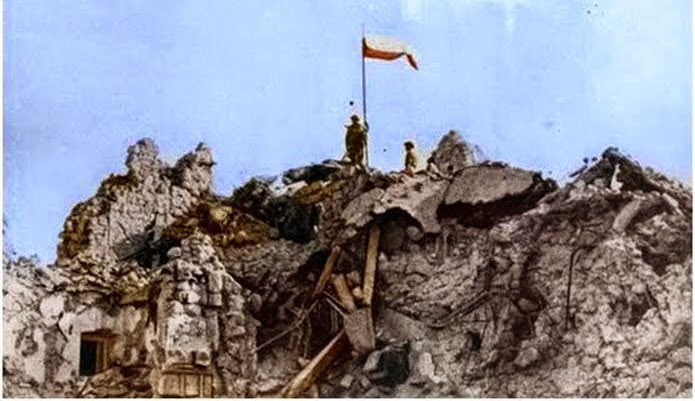  Polish flag on Monte Cassino |
||
66.123
|
Franek RYMASZEWSKI |
|
||||||
Polmont,
Scotland |
Following
my survival of the slavery and famine in the Soviet Union, and active
war service in Palestine, Egypt and Iraq, I arrived in the UK by a troopship
in 1943, at the age of nearly 20 years. From there I was sent for further training to the "Special Unit's Training Centre" in Polmont, near Falkirk, Scotland. In Polmont I attended further courses in radiotelegraphy, international communication codes, use of small arms and explosives, conspiracy methods and diversion, as well as simple parachute jump for non-combatants. Passing the tests and qualifying as a Radiotelegraph Operator First Class, I was soon requested for duties by the Special Radio Unit of the Polish Commander in Chief Staff H.Q. in London.
|
I was trained only for the purpose of a single, covert parachute drop into occupied Poland of a non-combatant soldier at the time of drop, without equipment (except the revolver). Jumps were conducted
at Ringway military airfield near Manchester
in England. But the actual combat parachutists of the
Polish Paratroopers Brigade were trained in Elie and Earlsferry
on the east coast of Scotland. |
........... at that time in Earlsferry born there, lived a very young Scott Reekie who was a cadet member of Royal Air Force Training Corps, being trained as a Navigator and Radio operator. Late in life, when
he retired in the USA, Scott created a great website of personal
remembrances of his early years in the village of Earlsferry.
Among its
many topics, one page is entitled "Polish Soldiers".
It gives accurate description of the presence of a large detachment
of Polish army paratroopers being trained there during the
1939-1945 war. |
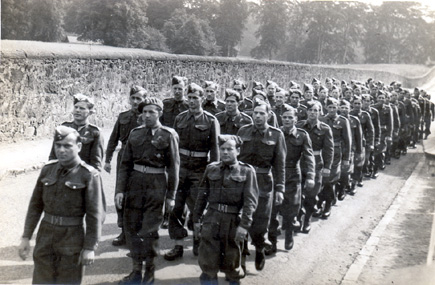 Our Special Unit marching to church in Polmont on Sunday Cichociemni (Polish for Silent dark ones) were a secret unit of the Polish Army in exile created to maintain contact with occupied Poland during World War II. |
|
London,
England |
|
|
Click
triangular start button above to hear the sound of Morse Code
|
||||
The Polish Homeland Army was the largest underground resistance army during World War Two. 400,000 strong at its peak it is credited with supplying the Allies with constant intelligence information about the eastern front, providing information about the V-1 rocket in Peenemunde, the sending over to Britain of the V-2 rocket, the sabotage and destruction of German supply trains and communication centres. It carried out the war's largest uprising (the Warsaw Rising) which lasted 63 days. The secret agents in Poland captured parts of the German V1 flying bombs and sent to London for examination, provided information on German military movements (e.g. giving advanced warning of the German plan to invade Russia), and gave the RAF full information about factory at Peenemunde, where the Germans were producing V2 rockets. |
|
The conspiratorial transmitters and receivers that we used in Poland were designed and produced during the war by our own Radio Workshop of the General HQ, Polish Army in the West, in Stanmore, London. It weighed 4.5 kilos, and its measurements were only 280mm x 210mm x 95mm. We called it "pipsztok" (peepshtock). We were all trained to use these "peepshtocks".
Polish conspiratorial transmitter and receiver, type AP1, called "peepshtock". |
|
 Franek Rymaszewski in wartime London - 1944 |
 Franek Rymaszewski on a London street in December 1944 |
Warsaw
Uprising |
Photo of burning Warsaw after German bombing - 1944
|
|
1945 - END OF WAR |
|
|
||||||
|
POST-WAR ENGLAND : 1946 > |
|
66.121
|
Edward RYMASZEWSKI | DIED |
|
|
The photo shows Edward (on the left), he is 69 years old, and his wartime general, gen. Stanislaw Maczek (on the right), Commander of the Polish 1st Armoured Division in England, who lived 102 years! He is 95 years old when the photo was taken in 1987 in Edinburgh, Scotland. Edward died in London on 29 October 1996 in an accidental fall, aged 78. According to Edward's wishes, his ashes were taken by his wife Marta to Poland, now free, and buried in the military cemetery "Powazki" in Warsaw. |
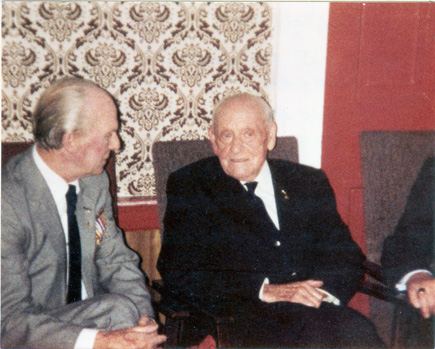 |
66.12
w |
Aleksandra RYMASZEWSKA (my mother) | DIED |
|
|
66.123
|
Franek RYMASZEWSKI |
|
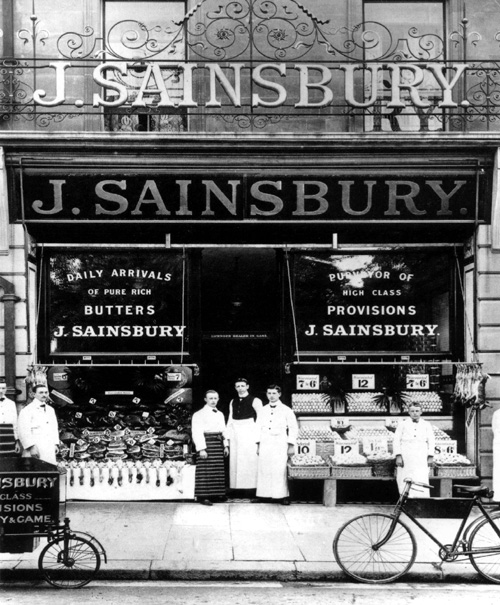 The Sainbury shop in Finchley, London N3, where I worked as a shop porter |
|
 The photo shows myself studying hard during my stay in the crowded hostel for Polish students "Hospicjum" at 21 Earls Court Square, London, SW5. |
|
 Franek Rymaszewski in front of the Dome of Discovery at the Festival of Britain in May 1951. The principal exhibition site was on the London South Bank Site of the River Thames near Waterloo Station. The Dome of Discovery included a number of exhibitions on various levels, on the theme of discovery — the Living World, Polar, the Sea, the Earth, the Physical World, the Land, the Sky and Outer Space. |
AUSTRALIA LONDON CANADA The same year (1962) I went to Montreal, Canada, where I worked as a Reinforced Concrete Designer with Du Pont of Canada Ltd., an American Chemical company very busy building their own factories for the latest technology of plastics production. Lena Duthie-Smith, whom I met in London during my studies, joined me in Canada. Although we lived at 1121, St.Catherine Street, West Montreal, Quebec, we got married in Toronto, Ontario, because in French part of Canada civil marrriage was not available nor recognized.
|
In London I obtained a position as a Structural Designer and Section leader with a large design and contracting building company George Wimpey & Co. Ltd. Within three years we had three children. Thinking about children's future I decided to return to Australia. BACK TO AUSTRALIA So on the 3 September 1966 we embarked on a long sea voyage on board the ship "Iberia". This time I was not alone. There were five of us, including 2 years 11 months old Lucian, 1 year 6 months old Celina and 2 and a half months old Julian.
Lena liked the new country as her first impressions of Australian shores reminded her of her native Scotland. More
in Chapter 9 : Emigration to Australia |
66.1241
|
Ewa RYMASZEWSKA |
|
|
||||
|
 Brian Stanbridge - Easter 2000 |
|
|||
|
| VANESSA
BRIGHTWELL SARAH STANBRIDGE |
|
||
|
67.112
|
Mieczyslaw Arnold RYMASZEWSKI |
|
|
|
 |
 |
67.1121
|
Rosemarie RYMASZEWSKI |
Young Rosemarie studying hard. All distractions, like her posters of pop singers "The Beatles" were resolutely thrown out by her father.
|
|
|
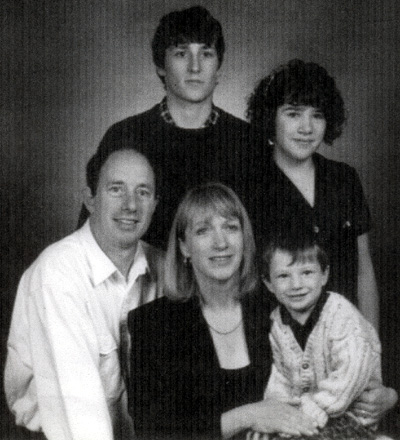 |
| 1: INTRODUCTION by Franek Rymaszewski | 7: WITH MY BROTHER in WARTIME ENGLAND | 11: POLISH CHRISTMAS and EASTER | ||
| 2: MY FAMILY TREE | 8: MY FAMILY SURVIVORS in POLAND | 12: ANCESTORS - Part 1 : Origin and Records | ||
| 3: RELEVANT MAPS and POLISH HISTORY | 9: MY EMIGRATION to AUSTRALIA | ANCESTORS - Part 2 : Family Tree | ||
| 4: MY FAMILY ANCESTRY in POLAND | 13: Rymaszewskis in present-day POLAND | |||
| 5: PINSK UNDER COMMUNIST TYRANNY | 10: Descendants in AUSTRALIA - Part 1 | 14: Rymaszewskis WORLD-WIDE (Part 1) | ||
| MIETEK'S MEMOIRS OF GULAG | Descendants in AUSTRALIA - Part 2 | Rymaszewskis in the USA (Part 2) | ||
| 6: MY ESCAPE FROM STALIN | Descendants in AUSTRALIA - Part 3 | 15: EMAILS from Visitors |






 The
Division wore a badge depicting the wings of the Polish medieval
knights - hussars who had the wings attached to their armour.
The Division also wore
one black shoulder strap on left side (see Edward's
photo). Edward served in the light anti-aircraft company
as a scout - motorcyclist.
The
Division wore a badge depicting the wings of the Polish medieval
knights - hussars who had the wings attached to their armour.
The Division also wore
one black shoulder strap on left side (see Edward's
photo). Edward served in the light anti-aircraft company
as a scout - motorcyclist.
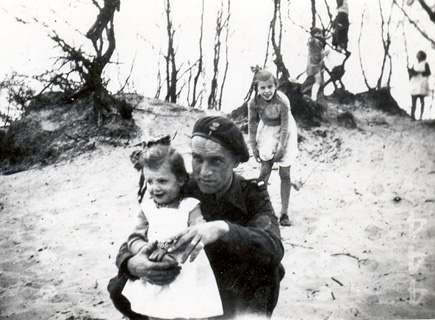







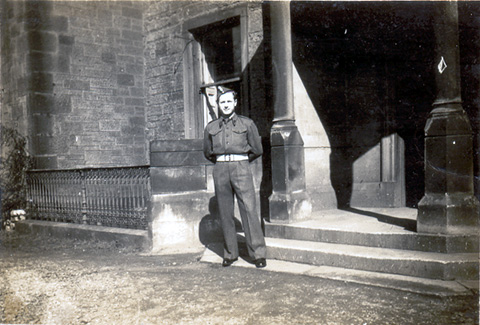


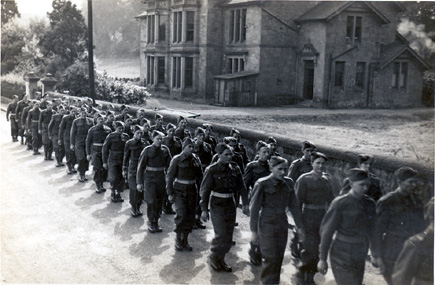

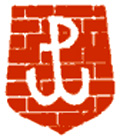
 active
contribution to war effort by radio-communication. In my case 24 hours
"live" contact with Polish Underground Army and later the
Warsaw Uprising.
active
contribution to war effort by radio-communication. In my case 24 hours
"live" contact with Polish Underground Army and later the
Warsaw Uprising. 



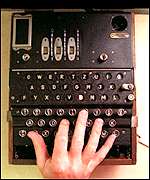 And
the greatest contribution to the final victory over the Nazis was
the presentation by the Poles to the British Government of "Enigma"
decoders which helped the Allies read German coded messages and so
helped to win the war!
And
the greatest contribution to the final victory over the Nazis was
the presentation by the Poles to the British Government of "Enigma"
decoders which helped the Allies read German coded messages and so
helped to win the war!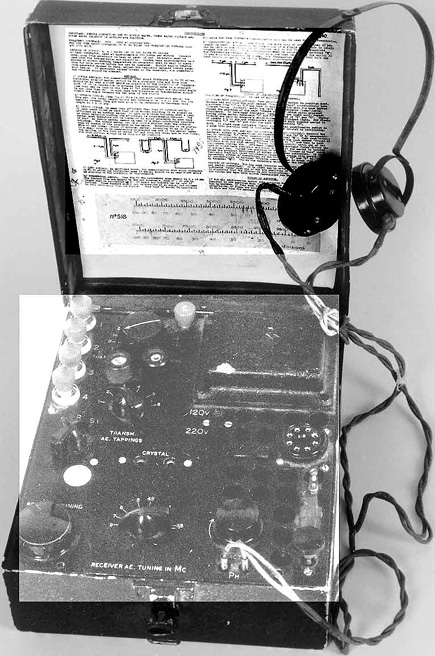




 Next,
continuing its policy of appeasement, the British Government,
anxious not to offend Stalin and invited representatives of the
Soviet Union and Polish Communist government, decided not to invite
the free and democratic "victorious" Polish Forces in
England to partake in the Allied Victory Parade and celebrations
held in London on 8 June 1946.
Next,
continuing its policy of appeasement, the British Government,
anxious not to offend Stalin and invited representatives of the
Soviet Union and Polish Communist government, decided not to invite
the free and democratic "victorious" Polish Forces in
England to partake in the Allied Victory Parade and celebrations
held in London on 8 June 1946.


 Year
1982 :
Year
1982 :
 Edward
was, for most of his life, active in the Polish Ex-combatants Association
- SPK (Stowarzyszenie Polskich Kombatantów). He was their president
for the London Area.
Edward
was, for most of his life, active in the Polish Ex-combatants Association
- SPK (Stowarzyszenie Polskich Kombatantów). He was their president
for the London Area.

